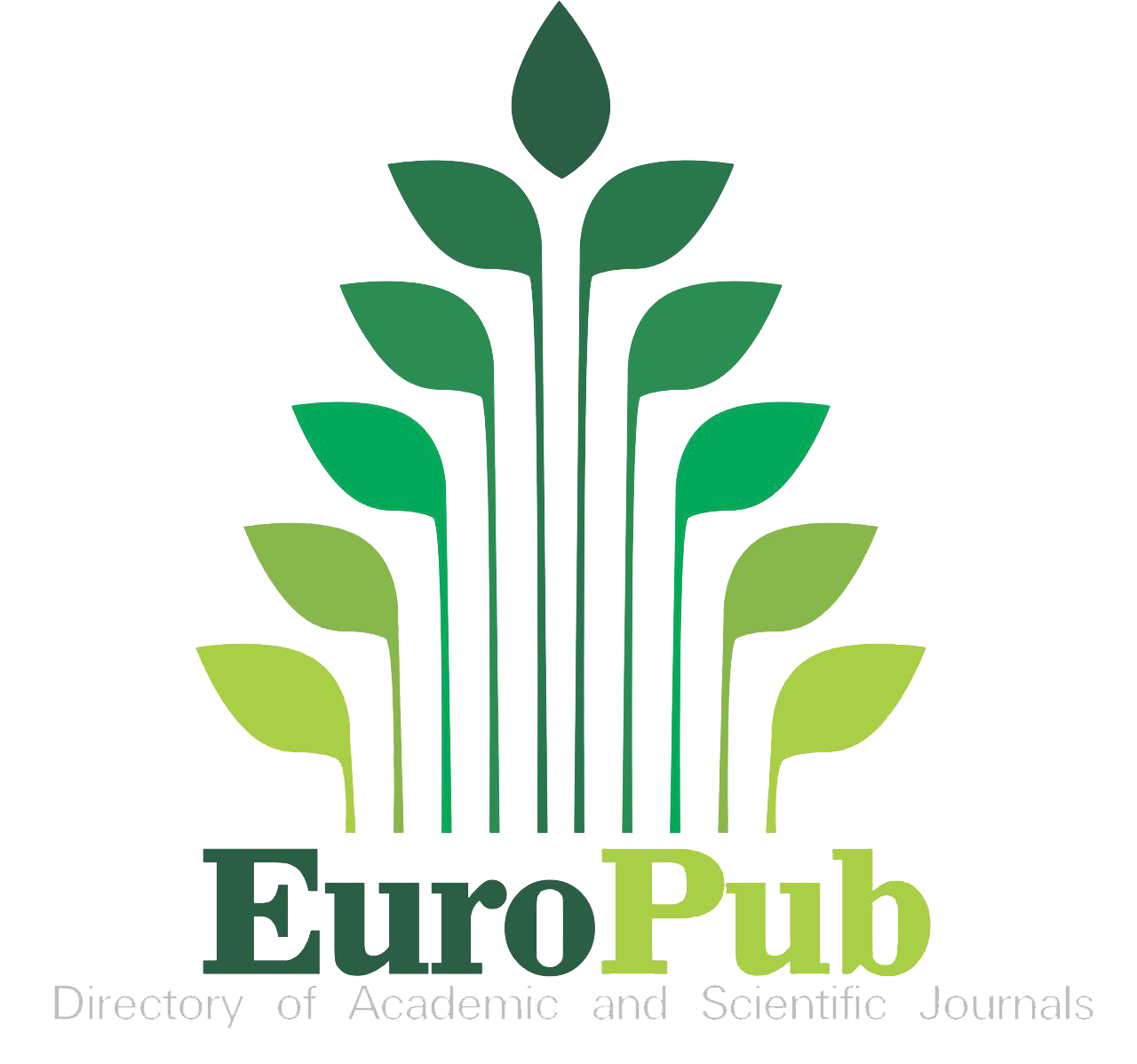Exploitation and Exploration Innovation
a Bibliometric Analysis of the Scientific Production of The Scopus Database (1995-2022)
DOI:
https://doi.org/10.16930/2237-766220233373Keywords:
Bibliometrics, Innovation Exploitation, Innovation ExplorationAbstract
Innovation enables organizations to invest in processes or products that increase their competitive advantage in the market. Thus, this research aims to conduct a bibliometric mapping of scientific production on Innovation Exploitation (incremental innovation) and Innovation Exploration (radical innovation), focusing on scientific articles published in journals in business, administration, accounting, and economics. However, a bibliometric analysis of the publications indexed in the Scopus database from 1995 to 2022 was performed and operationalized using RStudio’s Biblioshiny software. The search was performed by the keywords “Innovation Exploitation”, “Innovation Exploration”, and “Innovation Ambidexterity”, in the fields title, abstract, and keywords. After the filtration processes, the final sample comprised 746 scientific articles. The results of this research present an evolution of the theme over the years. In 1995, innovation was considered the creation or remodeling of products. In contrast, in 2020, innovation was defined as radical or incremental, in which the manager uses innovation as a strategy to increase sales and decreases production costs with the help of technology. Most publications (42.35%) occur after 2017, making clear the importance of the topic in recent years. Between 1995 and 2000, only 22 articles were published, and between 2017 and 2022, there were 408 studies. It was found that the author with the highest number of citations is American, and the country with the highest number of publications is the United States. However, the author with the highest number of publications is Italian, as well as the largest collaboration network, with Italy being the third country with the highest number of publications. Therefore, this study can be a starting point for future research or those interested in the topic.
References
Andriopoulos, C., & Lewis, M. W. (2009). Exploitation-Exploitation Tensions and Organizational Ambidexterity: Managing Innovation Paradoxes. Organization Science, 20(4), 696-717. https://doi.org/10.1287/orsc.1080.0406 DOI: https://doi.org/10.1287/orsc.1080.0406
Arekrans, J., Ritzén, S., & Laurenti, R. (2022). The role of radical innovation in circular strategy deployment. Business Strategy and the Environment. https://doi.org/10.1002/bse.3108 DOI: https://doi.org/10.1002/bse.3108
Aria, M., & Cuccurullo, C. (2017). Bibliometrix: An R-tool for comprehensive science mapping analysis. Journal of Informetrics, 11(4), 959-975 https://doi.org/10.1016/j.joi.2017.08.007 DOI: https://doi.org/10.1016/j.joi.2017.08.007
Atuahene-Gima, K. (2005). Resolving the Capability Paradox Rigidity in New Product Innovation. Journal of Marketing, 69(4), 61-83. https://doi.org 10.1509/jmkg.2005.69.4.61 DOI: https://doi.org/10.1509/jmkg.2005.69.4.61
Bedford, D. S., Bisbe, J., & Sweeney, B. (2018). Performance measurement systems as generators of cognitive conflict in ambidextrous companies. Accounting, Organizations and Society, 72, 21-37. https://doi.org/10.1016/j.aos.2018.05.010 DOI: https://doi.org/10.1016/j.aos.2018.05.010
Benner, M. J., & Tushman, M. L. (2003). Exploitation, Exploration, and Process Management: The Productivity Dilemma Revisited. The Academy of Management Review, 28(2), 238-256. https://doi.org/10.2307/30040711 DOI: https://doi.org/10.5465/amr.2003.9416096
Benner, M. J., & Tushman, M. (2002). Process Management and Technological Innovation: A Longitudinal Study of the Photography and Paint Industries. Administrative Science Quarterly, 47(4), 676–707. https://doi.org/10.2307/3094913 DOI: https://doi.org/10.2307/3094913
Bresciani, S., Ferraris, A., & Del Giudice, M. (2018). The management of organizational ambidexterity through alliances in a new context of analysis: Internet of Things (IoT) smart city projects. Technological Forecasting and Social Change, 136, 331-338. https://doi.org/10.1016/j.techfore.2017.03.002 DOI: https://doi.org/10.1016/j.techfore.2017.03.002
Brown, J. S., & Duguid, P. (2001). Knowledge and Organization: A Social Practice Perspective. Organization Science, 12(2), 198-213. https://doi.org/10.1287/orsc.12.2.198.10116 DOI: https://doi.org/10.1287/orsc.12.2.198.10116
Cao, Q., Gedajlovic, E., & Zhang, H. (2009). Unpacking organizational ambidexterity: Dimensions, contingencies, and synergistic effects. Organization Science, 20, 781-796. https://doi.org/10.1287/orsc.1090.0426 DOI: https://doi.org/10.1287/orsc.1090.0426
Christensen, T. B., Wells, P., & Cipcigan, L. (2012). Can innovative business models overcome resistance to electric vehicles? Better Place and battery electric cars in Denmark. Energy policy, 48, 498-505, https://doi.org/10.1016/j.enpol.2012.05.054 DOI: https://doi.org/10.1016/j.enpol.2012.05.054
Danneels, E. (2002). The dynamics of product innovation and the competencies of companies. Strategic Management Journal, 23(12), 1095-1121. https://doi.org/10.1002/smj.275 DOI: https://doi.org/10.1002/smj.275
Davenport, S., & Bibby, D. (1999). Rethinking a national innovation system: The small country as' SME'. Technology Analysis & Strategic Management, 11(3), 431-462. https://doi.org/10.1080/095373299107447 DOI: https://doi.org/10.1080/095373299107447
Donthu, N., Kumar, S., Pattnaik, D., & Lim, W. M. (2021). A bibliometric retrospection of marketing from the lens of psychology: Insights from Psychology & Marketing. Psychology & Marketing, 38(5), 834-865. https://doi.org/10.1002/mar.21472 DOI: https://doi.org/10.1002/mar.21472
Duarte Ribeiro, W., Alves, C., & Vieira de Santana Júnior, O. (2023). Creativity and innovation: cralves framework application analysis to generate new business ideas in a publishing startup. Brazilian Journal of Management and Innovation (Revista Brasileira De Gestão E Inovação), 10(2), 40–55. https://doi.org/10.18226/23190639.v10n2.03 DOI: https://doi.org/10.18226/23190639.v10n2.03
Erzurumlu, S., & Smith, N. (2023). Managing Technological Innovation Capabilities to Align Exploration and Exploitation with Technological Changes. International Journal of Innovation and Technology Management. https://doi.org/10.1142/s0219877023500128 DOI: https://doi.org/10.1142/S0219877023500128
González-Ramos, M. I., Guadamillas, F., & Donate, M. J. (2023). The relationship between knowledge management strategies and corporate social responsibility: Effects on innovation capabilities. Technological Forecasting and Social Change, 188, 122287. https://doi.org/10.1016/j.techfore.2022.122287 DOI: https://doi.org/10.1016/j.techfore.2022.122287
Guan, J., & Liu, N. (2016). Exploitative and exploratory innovations in knowledge network and collaboration network: A patent analysis in the technological field of nano-energy. Research Policy, 45(1), 97–112. https://doi.org/10.1016/j.respol.2015.08.002 DOI: https://doi.org/10.1016/j.respol.2015.08.002
Hiebl, M. R. W., & Pielsticker, D. I. (2023). Automation, organizational ambidexterity and the stability of employee relations: new tensions arising between corporate entrepreneurship, innovation management and stakeholder management. The Journal of Technology Transfer. https://doi.org/10.1007/s10961-022-09987-1 DOI: https://doi.org/10.1007/s10961-022-09987-1
Instituto Brasileiro de Geografia e Estatística [IBGE] (2021). Indústria e Construção. https://www.ibge.gov.br/estatisticas/economicas/industria.html
Jayanthi, S., & Sinha, K. K. (1998). Innovation implementation in high technology manufacturing: A chaos-theoretic empirical analysis. Journal of Operations Management, 16(4), 471-494. https://doi.org/10.1016/S0272-6963(98)00025-4 DOI: https://doi.org/10.1016/S0272-6963(98)00025-4
Jansen, J. J. P., Van Den Bosch, F. A. J., & Volberda, H. W., (2006). Exploratory Innovation, Exploratory Innovation and Performance: Effects of Organizational Background and Environmental Moderators. Science of Administration, 52(11), 1661-1674. https://doi.org/10.1287/mnsc.1060.0576 DOI: https://doi.org/10.1287/mnsc.1060.0576
Jiménez-Jiménez, D., & Sanz-Valle, R. (2011). Innovation, organizational learning, and performance. Journal of Business Research, 64(4), 408-417. https://doi.org/10.1016/j.jbusres.2010.09.010 DOI: https://doi.org/10.1016/j.jbusres.2010.09.010
Keller, J., & Chen, E. W. (2017). A road map of the paradoxical mind. In Wendy K. Smith, Marianne W. Lewis, Paula Jarzabkowski, & Ann Langley (Eds.). The Oxford handbook of organizational paradox (pp. 66-86). Oxford University Press. DOI: https://doi.org/10.1093/oxfordhb/9780198754428.013.7
Kumar, S., Pandey, N., Lim, W. M., Chatterjee, A. N., & Pandey, N. (2021). What do we know about transfer pricing? Insights from bibliometric analysis. Journal of Business Research, 134, 275-287. https://doi.org/10.1016/j.jbusres.2021.05.041 DOI: https://doi.org/10.1016/j.jbusres.2021.05.041
Lee, Y., & Hemmert, M. (2023). Performance implications of combining innovation and internationalization for Korean small- and medium-sized manufacturing firms: an exploration–exploitation perspective. Asian Business & Management, 22, 1-25. https://doi.org/10.1057/s41291-020-00144-w DOI: https://doi.org/10.1057/s41291-020-00144-w
Lennon, N. J. (2022). Balancing incremental and radical innovation through performance measurement and incentivization. The Journal of High Technology Management Research, 33(2), 100439. https://doi.org/10.1016/j.hitech.2022.100439 DOI: https://doi.org/10.1016/j.hitech.2022.100439
Li, P., Liu, H., Li, Y., & Wang, H. (2023). Exploration–Exploitation Duality with Both Tradeoff and Synergy: The Curvilinear Interaction Effects of Learning Modes on Innovation Types. Management and Organization Review, 1-35. https://doi.org/10.1017/mor.2022.49 DOI: https://doi.org/10.1017/mor.2022.49
Lin, H., McDonough, E. F., Lin, S. J., & Lin, C. Y. (2013). Managing the exploitation/ exploration paradox: The role of a learning capability and innovation ambidexterity. Journal of Product Innovation Management, 30(2), 262-278. https://doi.org/10.1111/j.1540-5885.2012.00998.x DOI: https://doi.org/10.1111/j.1540-5885.2012.00998.x
Lissillour, R., & Rodriguez-Escobar, J.A. (2023). Organizational ambidexterity and the learning organization: the strategic role of a corporate university. The Learning Organization, 30 (1), 55-75. https://doi.org/10.1108/TLO-01-2021-0011 DOI: https://doi.org/10.1108/TLO-01-2021-0011
March, James G. (1991). Exploration and exploitation in organizational learning. Organization Science, 2, 71-87. https://doi.org/10.1287/orsc.2.1.71 DOI: https://doi.org/10.1287/orsc.2.1.71
Martini, A., Laugen, B. T., Gastaldi, L., & Corso, M. (2012). Continuous innovation: towards a paradoxical, ambidextrous combination of exploration and exploitation. International Journal of Technology Management, 61(1), 1. https://doi.org/10.1504/ijtm.2013.050246 DOI: https://doi.org/10.1504/IJTM.2013.050246
Michelino, F., Caputo, M., Cammarano, A., & Lamberti, E. (2014). Open Innovation Inbound and Outbound: Organization and Performances. Journal of Technology Management &Amp; Inovação, 9(3), 65-82. https://doi.org/10.4067/S0718-27242014000300005 DOI: https://doi.org/10.4067/S0718-27242014000300005
Negulescu, O. H. (2020). Innovation management: the source of continuous improvement of competitive advantage and organization’s performance. Review of General Management, 32(2)
Nie, X., Yu, M., Zhai, Y., & Lin, H. (2022). Explorative and exploitative innovation: A perspective on CEO humility, narcissism, and market dynamism. Journal of Business Research, 147, 71-81. https://doi.org/10.1016/j.jbusres.2022.03.061 DOI: https://doi.org/10.1016/j.jbusres.2022.03.061
Nooteboom, B., Van Haverbeke, W., Duysters, G., Gilsing, V., & Van Den Oord, A. (2007). Optimal cognitive distance and absorptive capacity. Research Policy, 36(7), 1016-1034. https://doi.org/10.1016/j.respol.2007.04.003 DOI: https://doi.org/10.1016/j.respol.2007.04.003
Paul, J., Lim, W. M., O’Cass, A., Hao, A. W., & Bresciani, S. (2021). Scientific Procedures and Rationales for Systematic Literature Reviews (SPAR-4-SLR). International Journal of Consumer Studies. https://doi.org/10.1111/ijcs.12695 DOI: https://doi.org/10.1111/ijcs.12695
Peris-Ortiz, M., García-Hurtado, D., & Román, A. P. (2023). Measuring knowledge exploration and exploitation in universities and the relationship with global ranking indicators. European Research on Management and Business Economics, 29(2), 100212. https://doi.org/10.1016/j.iedeen.2022.100212 DOI: https://doi.org/10.1016/j.iedeen.2022.100212
Raisch, S., Birkinshaw, J., Probst, G., & Tushman, ML (2009). Organizational Ambidexterity: Balancing Exploitation and Exploitation for Sustained Performance. Organization Science, 20(4), 685-695. doi:10.1287/orsc.1090.0428 DOI: https://doi.org/10.1287/orsc.1090.0428
Sabidussi, A., Lokshin, B., & Duysters, G. (2021). The innovator’s dilemma: the performance consequences of sequential or flexible exploration and exploitation patterns in turbulent environments. Technology Analysis & Strategic Management, 1-13. https://doi.org/10.1080/09537325.2021.1975033 DOI: https://doi.org/10.1080/09537325.2021.1975033
Shafique, I., Kalyar, M.N., Shafique, M., Kianto, A. & Beh, L.-S. (2022). Demystifying the link between knowledge management capability and innovation ambidexterity: organizational structure as a moderator. Business Process Management Journal, 28(5/6), 1343-1363. https://doi.org/10.1108/BPMJ-11-2021-0713 DOI: https://doi.org/10.1108/BPMJ-11-2021-0713
Shen, S., Venaik, S. & Zhu, Y. (2023). A Dynamic Model of Internationalization and Innovation in Emerging Market Enterprises: Knowledge Exploration, Transformation, and Exploitation. Manag Int Rev. https://doi-org.ez71.periodicos.capes.gov.br/10.1007/s11575-023-00509-1 DOI: https://doi.org/10.1007/s11575-023-00509-1
Smith, W. K., & Lewis, M. W. (2011). Toward a theory of paradox: A dynamic equilibrium model of organizing. Academy of Management Review, 36, 381-403. https://doi.org/10.5465/amr.2009.0223 DOI: https://doi.org/10.5465/amr.2009.0223
Solís-Molina, M., Hernández-Espallardo, M., & Rodríguez-Orejuela, A. (2018). Performance implications of organizational ambidexterity versus specialization in exploitation or exploration: The role of absorptive capacity. Journal of business research, 91, 181-194. https://doi.org/10.1016/j.jbusres.2018.06.001 DOI: https://doi.org/10.1016/j.jbusres.2018.06.001
Tidd, J., & Bessant, J. (2015). Gestão da inovação (5a ed.). Bookman.
Tushman, M. L., & O’Reilly, C. A. (1996). Ambidextrous Organizations: Managing Evolutionary and Revolutionary Change. California Management Review, 38(4), 8-29. https://doi.org/10.2307/41165852 DOI: https://doi.org/10.2307/41165852
Van Neerijnen, P., Tempelaar, M. P., & Van de Vrande, V. (2022). Embracing Paradox: TMT paradoxical processes as a steppingstone between TMT reflexivity and organizational ambidexterity. Organization Studies, 43(11), 1793-1814. https://doi.org/10.1177/01708406211058640 DOI: https://doi.org/10.1177/01708406211058640
Van de Vrande, V., Jong, J. P. J., Vanhaverbeke, W., & de Rochemont, M. (2009). Open innovation in SMEs: Trends, motives, and management challenges. Technovation, 29(6-7), 423-437. https://doi.org/10.1016/j.technovation.2008.1 DOI: https://doi.org/10.1016/j.technovation.2008.10.001
Warglien, M. (1995). Hierarchical Selection and Organizational Adaptation. Industrial and Corporate Change, 4(1), 161-186. https://doi.org/10.1093/icc/4.1.161 DOI: https://doi.org/10.1093/icc/4.1.161
Zheng, F., Li, Y., Jian, Z., & Lu, R. (2023). Industrial productivity dilemma in management and economics: Retrospect and prospect. International Journal of Management Reviews. https://doi.org/10.1111/ijmr.12327 DOI: https://doi.org/10.1111/ijmr.12327
Zhou, K. Z., & Wu, F. (2009). Technological capacity, strategic flexibility, and product innovation. Strategic Management Magazine. https://doi.org/10.1002/smj.830 DOI: https://doi.org/10.1002/smj.830
Published
How to Cite
Issue
Section
License
Copyright (c) 2023 Revista Catarinense da Ciência Contábil

This work is licensed under a Creative Commons Attribution 4.0 International License.
The copyright for articles published in this journal belongs to the author (s), with first publication rights assigned to Revista Catarinense da Ciência Contábil. Due to appearing in this publicly accessible journal, articles are free to use, with mandatory recognition of the original authorship and initial publication in this magazine and for educational and non-commercial applications. The magazine chose to use published works for non-commercial purposes, including the right to submit or work for publicly accessible databases. The content of published articles is the sole and exclusive responsibility of the authors. - The author (s) authorize (s) a publication of the article in the journal; - The author (s) guarantee (s) that a contribution is original and unpublished and that it is not being evaluated in another magazine (s); - A magazine is not responsible for the opinions, ideas and concepts emitted in the texts, for the full responsibility of the author (s); - It is reserved to the editors or the right to make textual adjustments and to adjust the article to the publication rules.
This work is licensed under a Creative Commons Atribuição-NãoComercial-CompartilhaIgual 4.0 Internacional.










